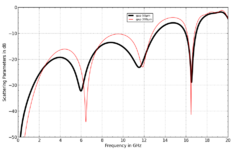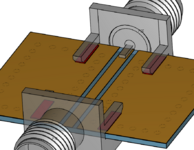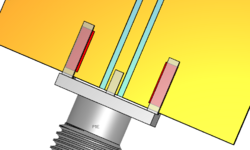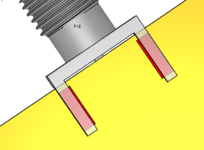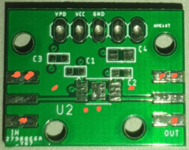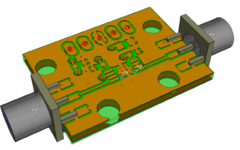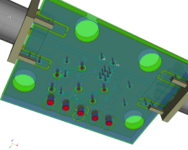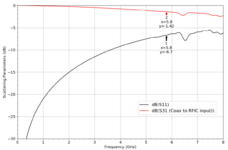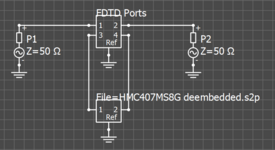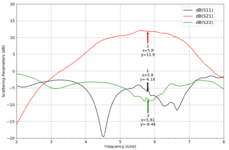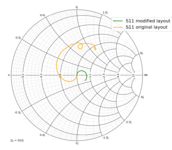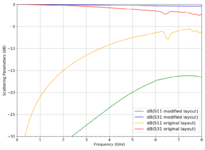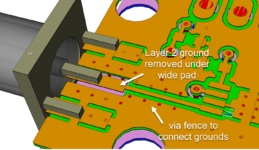susanbod
Newbie level 6
Hi everyone 
I've recently started with RF design. So I tried to amplify a 12dbm output power.
I replicated the HMC407MS8G Evaluation board (https://www.analog.com/media/en/technical-documentation/data-sheets/hmc407.pdf) on a 4 layer PCB
The PCBs were made in JLC PCB using the following stack up my 4 layer board. The trace width was calculated as 0.29 mm for 50 ohm impedance trace.

So I finally got the PCB, connected the amplifier to a 12 dBm output power VCO to test the amplification and noticed the amplifier's the output increased only by 1dB. Total output power was 13dBm
Can someone please help? I'm more than happy to share the designs. Every time I try to replicate simple RF boards the power is no where near what its supposed to be

I've recently started with RF design. So I tried to amplify a 12dbm output power.
I replicated the HMC407MS8G Evaluation board (https://www.analog.com/media/en/technical-documentation/data-sheets/hmc407.pdf) on a 4 layer PCB
The PCBs were made in JLC PCB using the following stack up my 4 layer board. The trace width was calculated as 0.29 mm for 50 ohm impedance trace.
So I finally got the PCB, connected the amplifier to a 12 dBm output power VCO to test the amplification and noticed the amplifier's the output increased only by 1dB. Total output power was 13dBm
Can someone please help? I'm more than happy to share the designs. Every time I try to replicate simple RF boards the power is no where near what its supposed to be
